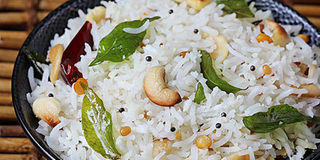Prime
Rice is more than a meal

Rice.
What you need to know:
- Review. Rice is a delicacy in different parts of the world and a staple food for more than half the world population. A. Kadumukasa Kironde II.
“May your rice never burn!” is a favourite New Year’s Eve saying in China and rice is the staple food for more than half of the world’s population, and for more than two thousand years the world over meals have begun with a bowl of rice.
While here in Buganda a meal without matooke is considered not to have eaten at all. But matooke is small potato compared to rice, speaking of which, how many of you know that there are more than 40,000 known varieties of rice in the world! Whereas the rice is usually accompanied by other staples, the meal would not have been filling without the all-important addition of rice and posho.
In Asian cooking the idea of the stir fries really acts as a wonderful fillip and one shudders to think of how forlorn and bland they would be otherwise. As well as being nutritious, rice is cholesterol, fat and sodium-free, easy to digest and ideal for gluten-allergic people and last but not least, a good source of fibre and vitamins.
Americans and Europeans were somewhat slow on the take to realise the versatile grain as being a little more than a side dish. They were loath to give up their typical meal that consisted of a lot of meat and fat with scant regard to adding grains, legumes, vegetables and fruits.
Today’s chefs are making up for the oversight with a vengeance and rice has finally come into its own. Sharing in the spotlight with rice is a newly discovered appreciation for the kind of cooking that was practised by the ancient based cuisines. This cooking style features loads of grains, vegetables, fruits and legumes with moderate amounts of animal based foods.
So many housewives complain to me about the variability of the way their rice turns out and are often reduced to tears and embarrassment with the results of their rice! As is the case with flour, the rice itself may have more or less moisture in its makeup. In Japan the standard ratio is 8 cups of water to 8 cups of rice for the first six weeks after harvest.
The amount of water then rises steadily and when the rice is 11 months old the ratio changes wherein 8 cups of rice need 10 cups of water.
Besides moisture variability in rice, but the type must also be reckoned with. Brown rice which tends to retain its bran coat and germ, takes forever to tenderize and is unquestionably more nutritionally valuable than the run of the mill highly polished white rice that obtains all over Uganda.
There are also differences in the grain hybrids. Use short or medium grain types------ which cook up tender and moist----- in recipes that call for sauces and puddings. Long grain types are best for salads, soups and main dishes where each grain should be separate and fluffy. This is especially true when making the likes of pilao, biryani, Jollof etc.
Another popular rice to be found on the market in America and Europe are the preprocessed rices such as Uncle Ben’s rice. When using these, follow the directions on the label bearing in mind that some of these are par boiled before milling and have greater nutritional value than the polished white rice.
Rice pudding
6 to 8 Servings
Preheat oven to 325dFH/162dC
Have ready:
2 cups short or medium grain boiled rice
Combine and beat well and add:
1 ½ cups milk
¼ teaspoons salt
4 to 6 tablespoons sugar or ½ cup brown sugar
1 tablespoon soft butter
1 teaspoon vanilla
2 to 4 eggs
Add:
½ teaspoon grated lemon rind
1 teaspoon lemon juice
(½ cup raisins or dates)
Combine these ingredients lightly with a fork.
Grease a baking dish and cover the bottom and sides with: (Cake or cookie crumbs)
Put rice in the dish and cover the top with more crumbs.
Bake the pudding until set for about 50 minutes. Serve hot or cold:
Cream or fruit sauce
Rinse Classic way:
No matter how you’re cooking your rice (or which variety you’re making), it’s important to rinse those grains. Doing so removes excess starch. Left on the rice, the starch results in unappealing, gummy results. Some recipes will tell you to place the rice in a bowl and change the water several times, but we think the easiest technique is to rinse it in a fine mesh strainer. Agitate the grains with your hands as you run water over them to shower them evenly.




